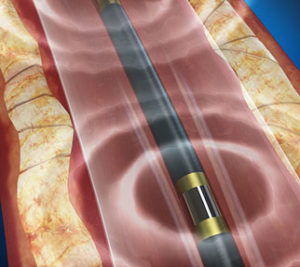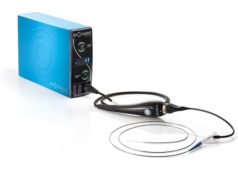
Shockwave Medical has announced plans for DISRUPT PAD III—what it claims is the “largest ever” multicentre randomised study to exclusively enrol patients with calcified peripheral artery disease.
Previous DISRUPT PAD studies utilised Lithoplasty as primary therapy, demonstrating safe, effective and consistent revascularisation of calcified lesions while maintaining future treatment options. To date, the potential benefit of combination therapy in these patients has not yet been evaluated.
DISRUPT PAD III will study use of the Shockwave Medical Lithoplasty system in combination with drug-coated balloon therapy to assess short- and long-term outcomes compared to those achievable using traditional balloon angioplasty prior to drug-coated balloon in a calcified patient population.
“Most contemporary randomised studies in peripheral artery disease have excluded calcified lesions. The available data on this difficult-to-treat patient cohort largely comes from post-hoc, subset analyses of single-arm registries. DISRUPT PAD III will be an important study because it will provide physicians foundational Level I evidence to guide treatment of this difficult-to-treat patient cohort,” said William Gray, principal investigator of DISRUPT PAD III and system chief, Division of Cardiovascular Disease at Main Line Health and president, Lankenau Heart Institute, Wynnewood, USA. “Today, there is no clear standard of care for interventional treatment of calcified peripheral artery disease.”
“Modifying calcium is the first step in any successful treatment of this patient cohort,” said Daniel Hawkins, chief executive officer of Shockwave Medical. Lithoplasty technology has been shown to effectively and consistently modify calcium, enabling successful revascularisation of these patients while keeping subsequent treatment options open. With the multiple treatment approaches being used in peripheral artery disease intervention today, and the absence of a consistent standard, understanding the benefits of using Lithoplasty in combination with other therapies is important to advancing the data on the treatment of calcified peripheral artery disease.”
In September, the Lithoplasty system received clearance from the US Food and Drug Administration (FDA) for use in the peripheral vasculature, including the iliac, femoral, ilio-femoral, popliteal, infra-popliteal, and renal arteries.
Six-month follow up data from the DISRUPT PAD Study, presented last month at the VIVA 16 Conference, demonstrated that Lithoplasty is safe and the results are consistent and effective in the treatment of patients with calcified lesions. The 95-patient single-arm study evaluated Lithoplasty as a stand-alone, primary therapy.
DISRUPT PAD III will compare the safety and effectiveness of Lithoplasty followed by drug-coated balloon versus drug-coated balloon with standard pre-dilatation for the treatment of moderately and severely calcified femoropopliteal arteries. The study will enrol up to 300 patients at 45 global centres in the USA, Europe and New Zealand. The IN.PACT Admiral drug-coated balloon will be used in both treatment arms. Drug-coated balloons have historically been shown to be effective in non-calcified lesions, but results are far less favourable as calcification levels of increase. The DISRUPT PAD III study is designed to assess the impact of Lithoplasty on outcomes of drug-coated balloon use in calcified lesions. The primary endpoint of the study will be acute procedural success absent the need for stents and the secondary endpoint will be primary patency at 12 months.
“We are very pleased with positive, consistent DISRUPT PAD data and the durability of outcomes out to six months thus far,” said Todd Brinton, clinical associate professor of Medicine at Stanford and co-founder of Shockwave Medical. “The data to date demonstrates that Lithoplasty is a viable primary therapy for revascularisation of calcified peripheral artery disease. However, the combination of peripheral Lithoplasty to treat calcification and reduce the need for stents, in conjunction with a drug-coated balloon to reduce long-term restenosis may be a highly attractive therapeutic option for patients with calcified peripheral artery disease.”
DISRUPT PAD III will begin enrolment in early 2017.












